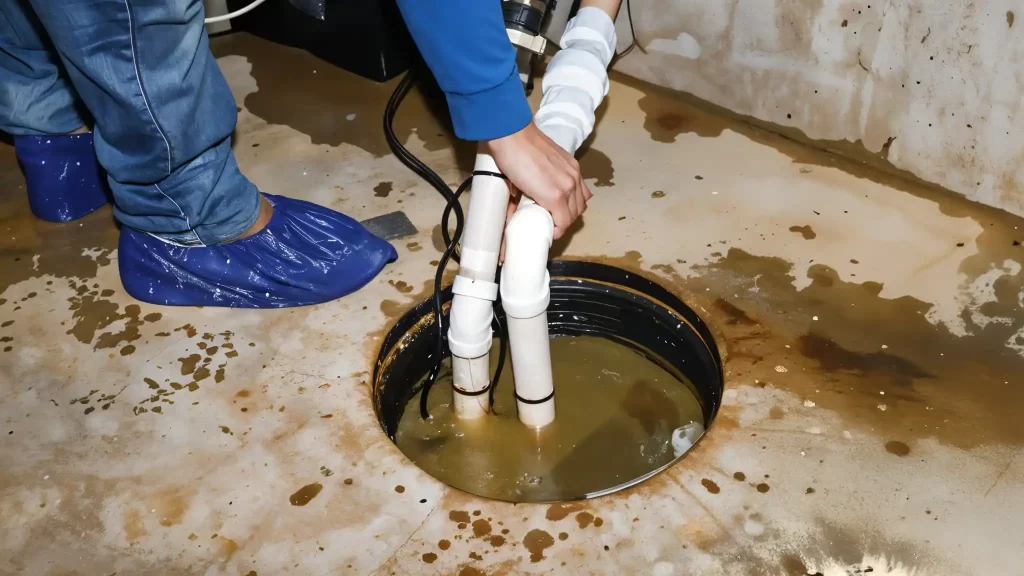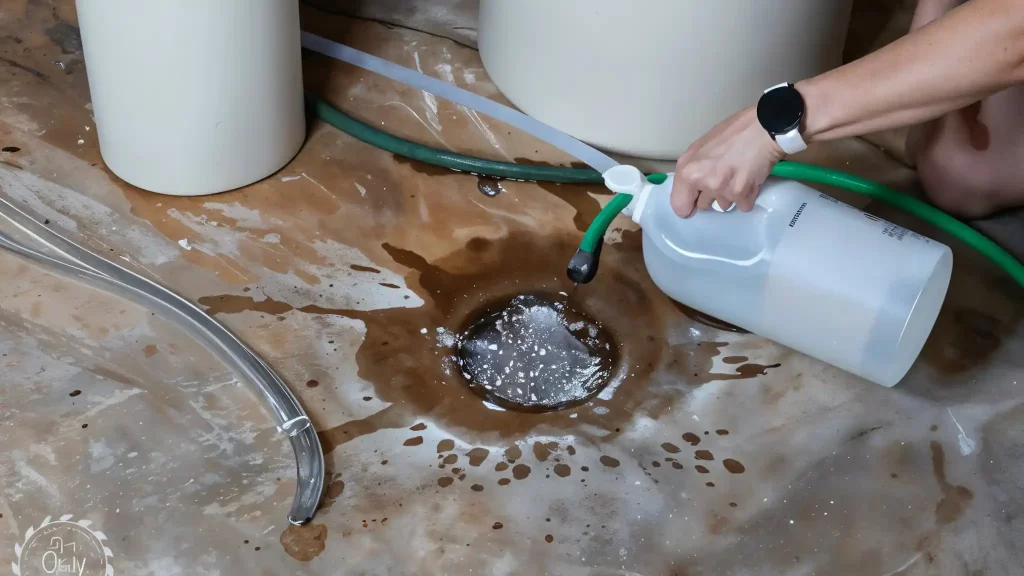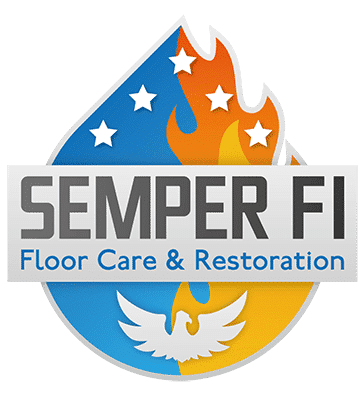A basement drain backup is one of the most frustrating—and potentially damaging—issues a homeowner can face. When water starts pooling in your basement because of a clogged drain, the problem can escalate quickly, leading to water damage, mold, and even structural concerns if not handled promptly.
While calling in the professionals is often the safest bet, there are steps you can take to unclog a basement drain with standing water before the situation gets out of hand. In this guide, we’ll walk through practical DIY tips that work, as well as when it’s time to call in trusted experts like Semper Fi, the premier water damage restoration company in Yuma, AZ.

Step 1: Safety First
Before tackling the standing water, make safety your top priority. Standing water in basements may contain contaminants, sewage, or hidden electrical hazards.
- Turn off power to the basement area if water levels are near outlets or wiring.
- Wear protective gear like gloves, boots, and safety glasses.
- Ventilate the space if possible, since stagnant water can release unpleasant or harmful odors.
Once you’ve ensured the area is safe, you can begin addressing the clog.
Step 2: Remove Standing Water
To effectively unclog the drain, you need to clear as much standing water as possible.
- Use a wet/dry vacuum to suck up excess water.
- If the water level is too high, a submersible pump can help speed up the process.
- For smaller amounts of water, buckets and mops may do the trick.
Removing the water not only makes the drain accessible but also reduces the risk of further water damage.
Step 3: Inspect the Drain Opening
Most basement drains are equipped with a grate or cover that can collect debris like lint, hair, and dirt over time.
- Remove the cover and check for visible blockages.
- Clean away any debris, gunk, or sediment.
- Shine a flashlight down the drain to see if you can spot the source of the clog.
Sometimes the issue is as simple as surface-level buildup, which can be cleared with basic tools.
Step 4: Try a Plunger
Just like a clogged sink or toilet, a basement drain may respond well to plunging.
- Use a cup plunger (the flat-bottom kind, not the toilet plunger).
- Create a strong seal around the drain opening.
- Push and pull vigorously to dislodge the clog.
If the clog is shallow, this method can quickly restore proper drainage.
Step 5: Use a Drain Snake or Auger
For tougher blockages deeper in the pipe, a drain snake (also called an auger) is a reliable tool.
- Insert the snake into the drain until you meet resistance.
- Rotate and push forward to break through the clog.
- Slowly pull the snake back out, bringing any debris with it.
Drain snakes are inexpensive, available at most hardware stores, and highly effective for stubborn clogs.
Step 6: Flush With Hot Water and Cleaning Solutions
After loosening the clog, flush the drain to ensure it’s fully cleared.
- Pour a bucket of hot water down the drain.
- Follow with a baking soda and vinegar solution (1 cup baking soda followed by 1 cup vinegar). Let it fizz for 15 minutes before rinsing with more hot water.
- Avoid harsh chemical drain cleaners, as they can corrode pipes and create long-term problems.
This step helps clean out any lingering residue and prevents future buildup.
Step 7: Check the Floor Drain Trap
Many basement drains have a trap that holds water to prevent sewer gases from entering the home. Unfortunately, this trap can also collect sludge over time.
- Remove the clean-out plug, if accessible.
- Use a plumbing snake or shop vac to remove buildup inside the trap.
- Refill the trap with clean water when finished.
A clogged trap is often the hidden culprit behind standing water.
Step 8: Prevent Future Clogs
Once your basement drain is working again, take steps to avoid a repeat scenario.
- Install a drain strainer to catch debris before it enters the pipes.
- Regularly flush drains with hot water to keep them clear.
- Keep basement floors clean to reduce dirt, lint, and pet hair buildup.
These small habits can save you from bigger headaches down the road.
When to Call the Professionals
While DIY solutions can often clear minor clogs, some basement drain issues require professional intervention. If you notice any of the following, it’s time to bring in the experts:
- Sewage backing up through the basement drain.
- Persistent clogs that return even after cleaning.
- Widespread water damage on basement floors or walls.
- Strange odors or gurgling noises from your plumbing system.
In these cases, it’s not just about unclogging the drain—it’s about protecting your home from long-term damage.
Why Choose Semper Fi in Yuma, AZ
When water damage strikes, swift and professional help is essential. Semper Fi has earned a reputation as the premier water damage restoration company in Yuma, AZ, thanks to their unmatched expertise, rapid response, and customer-first approach.
Here’s why homeowners trust them:
- 24/7 Emergency Response – Water damage doesn’t wait, and neither does Semper Fi.
- Comprehensive Restoration Services – From drain backups to flood damage, they handle it all.
- Advanced Equipment – State-of-the-art drying, cleaning, and restoration tools ensure your home is safe and sound.
- Veteran-Owned Excellence – With discipline, dedication, and integrity at the core of their values, Semper Fi delivers service you can count on.
Whether it’s a clogged basement drain or a full-scale water damage emergency, Semper Fi ensures your home gets the care it needs—fast.

Final Thoughts
Unclogging a basement drain with standing water can feel daunting, but with the right approach, you can often restore proper flow on your own. Start with simple solutions like clearing surface debris, plunging, or snaking the line, and escalate as needed.
However, never hesitate to call in professional help when the situation becomes overwhelming. In Yuma, AZ, Semper Fi stands ready as the trusted name in water damage restoration, bringing expertise and peace of mind when you need it most.
FAQ
1. Why is there standing water in my basement drain?
Standing water usually means the drain is clogged with debris like dirt, lint, or grease. It can also indicate a bigger issue, such as a main sewer line blockage or a malfunctioning sump pump.
2. Can I use chemical drain cleaners in my basement drain?
It’s not recommended. Harsh chemicals can corrode pipes and damage your plumbing system. Instead, use natural solutions like baking soda and vinegar, or mechanical tools like a plunger or drain snake.
3. How do I know if the clog is in the basement drain or the main sewer line?
If only your basement drain is backed up, it’s likely a local clog. If you notice water backing up into multiple drains or toilets in your home, it could be a main sewer line problem, which requires professional help.
4. Is it safe to unclog a basement drain myself?
Yes, for minor clogs. Always wear protective gear and turn off electricity in flooded areas. If the clog involves sewage or the water damage spreads, call a professional immediately.
5. What tools are best for unclogging a basement drain?
A wet/dry vacuum, plunger, drain snake (auger), and buckets or pumps for water removal are the most effective tools.
6. How can I prevent basement drain clogs in the future?
Install a drain strainer, regularly flush with hot water, and keep basement floors clean to reduce dirt and debris buildup.
7. What should I do if sewage backs up into my basement?
Do not attempt to handle raw sewage on your own. Leave the area immediately and call a professional restoration company like Semper Fi, Yuma, AZ’s leading water damage restoration experts.
8. How long does it take to unclog a basement drain?
Minor clogs can take as little as 15–30 minutes to clear. Severe clogs or sewer line issues may take hours and usually require professional intervention.
9. Why does my basement smell bad even after unclogging the drain?
The floor drain trap may be dry or filled with sludge. Clean and refill the trap with water, and if the odor persists, call a professional to inspect for hidden blockages or sewer gas leaks.
10. When should I call Semper Fi for help?
Call Semper Fi if you see sewage backup, recurring clogs, or signs of water damage like damp walls, mold, or flooding. Their 24/7 emergency response ensures your home is safe and restored quickly.


